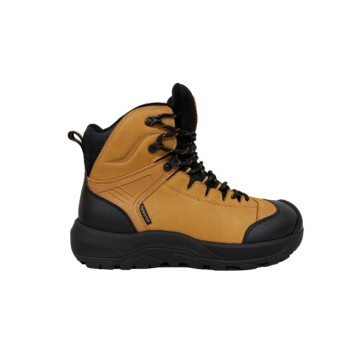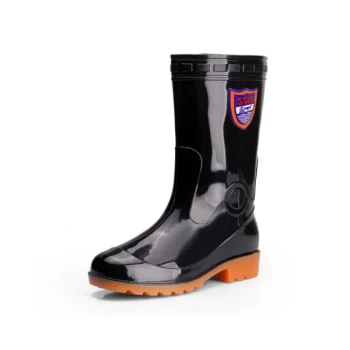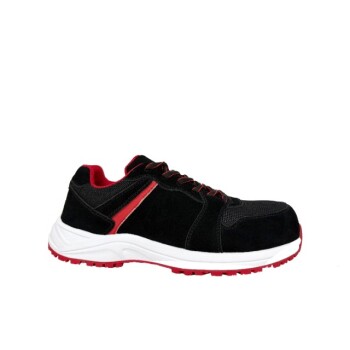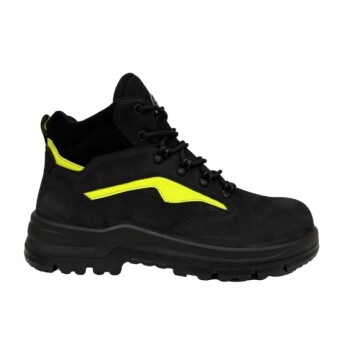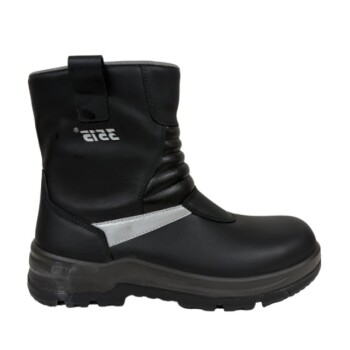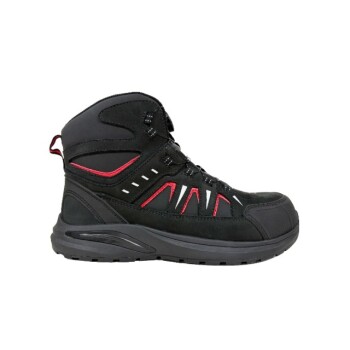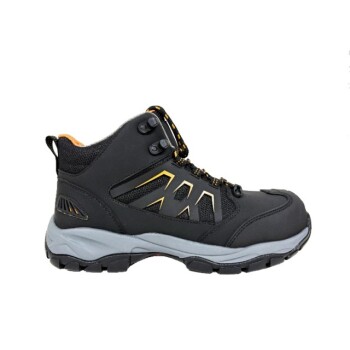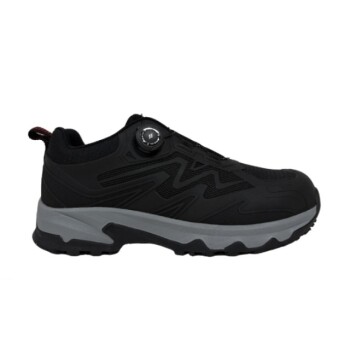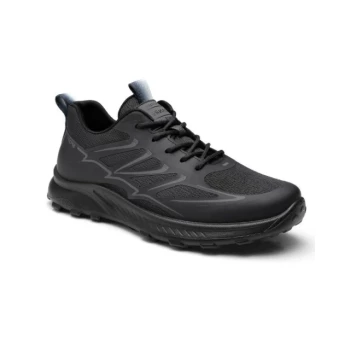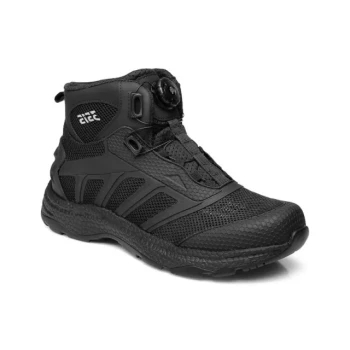The primary challenges of keeping your feet warm while cycling in winter stem from a combination of low blood flow, high exposure, and equipment not designed for the cold. Your feet generate little heat because they are less active than in running, while simultaneously being exposed to heat-sapping wind chill, road spray, and direct contact with cold metal cleats.
The core issue is that you are fighting a multi-front war against heat loss. Success doesn't come from a single piece of gear, but from a systematic approach that insulates, blocks wind and water, and preserves circulation without trapping moisture.
The Core Problem: Heat Loss Mechanics
To effectively solve the problem of cold feet, you must first understand the specific ways your feet lose heat during a ride. Each mechanism requires a different defense.
Challenge 1: Insufficient Blood Flow
Cycling is not a weight-bearing activity for your feet. Unlike running or walking, the muscles in your feet and lower legs are not contracting intensely, meaning less warm blood is actively pumped to your extremities. This makes them highly susceptible to cooling down.
Challenge 2: The Triple Threat of Cold
Your feet are on the front line, battling three types of heat transfer simultaneously.
- Conduction: Heat is lost through direct contact. The metal cleats on your shoes are excellent conductors, constantly pulling warmth from the bottom of your feet into your cold pedals.
- Convection: This is the effect of wind chill. As cold air moves over your shoes, it continuously strips away the layer of warm air, dramatically accelerating heat loss.
- Moisture: Water is the enemy of warmth. It can come from outside as road spray and puddles, or from inside as sweat. Wet socks lose their insulating properties and rapidly cool your skin.
Challenge 3: Shoe Design Flaws
Standard cycling shoes are designed for warm-weather performance. Their key features—ventilation holes for cooling and a snug fit for power transfer—become significant liabilities in the winter. The vents allow cold air in, and the tight fit leaves little room for the thick, insulating socks needed for warmth.
A Systematic Approach to Warmth
Building a reliable system involves layering and targeted solutions to counter each of the challenges mentioned above.
The Foundation: Socks and Insoles
Start your system from the inside out. Wool socks are the standard due to their ability to insulate even when damp. Avoid cotton entirely. For very cold days, a thin merino or silk liner sock under a medium-weight wool sock can add warmth without adding excessive bulk.
Insulated insoles are a simple but highly effective upgrade. They create a thermal barrier that directly combats conduction, slowing heat loss through your cleats.
The Outer Shell: Blocking Wind and Water
This is your primary defense against convection and external moisture.
- Overshoes (Booties): These fit over your regular cycling shoes. Neoprene is a popular material as it provides excellent insulation and blocks both wind and water.
- Taping Vents: A low-cost solution is to use duct tape or electrical tape on the inside or outside of your shoes to cover any ventilation holes, stopping cold air from entering.
The Heavy Artillery: Dedicated Winter Boots
For those who ride consistently in freezing temperatures, dedicated winter cycling boots are the ultimate solution. They combine insulation, a windproof and waterproof outer layer, and a roomier fit for thicker socks into a single, highly effective package.
Understanding the Trade-offs
There is no single perfect solution, and each approach comes with compromises you must understand to build the right system for you.
Winter Boots vs. Overshoes
Winter boots offer the best warmth and are a simple, one-step solution. However, they are a significant investment and can be too warm for milder cool days. Overshoes are more versatile and affordable but can be difficult to put on and may not provide enough insulation for truly frigid conditions.
The Moisture Trap
The biggest pitfall of waterproofing is that it can trap sweat. If your feet sweat heavily, a fully waterproof boot or overshoe can become a sauna. The trapped moisture will eventually make your feet cold. Managing your effort level and choosing breathable wool socks is critical.
The Risk of Constriction
More is not always better. Jamming two pairs of thick socks into a snug shoe or pulling booties on too tightly can constrict blood flow. This is counterproductive, as it prevents warm blood from reaching your toes, making your feet colder, faster. Always ensure you can wiggle your toes freely.
Making the Right Choice for Your Goal
Select your strategy based on the conditions you ride in most often.
- If your primary focus is riding in truly freezing conditions (below 0°C / 32°F): Invest in dedicated winter cycling boots. Their integrated design provides the most reliable warmth and protection.
- If your primary focus is riding in cool, damp, or windy conditions (above freezing): A quality pair of neoprene overshoes combined with wool socks is a versatile and cost-effective system.
- If your primary focus is budget-friendly solutions for mild winters: Start by sealing shoe vents, adding insulated insoles, and carefully layering wool socks to avoid constriction.
By understanding the principles of heat loss, you can build a personalized system that keeps your feet warm and your winter rides enjoyable.
Summary Table:
| Challenge | Primary Cause | Key Solution |
|---|---|---|
| Insufficient Blood Flow | Inactive foot muscles | Avoid constrictive socks, ensure proper shoe fit |
| Conduction (Cold Pedals) | Metal cleats conducting heat | Use insulated insoles |
| Convection (Wind Chill) | Air moving over shoes | Wear windproof overshoes or winter boots |
| Moisture (Sweat/Rain) | Wet socks losing insulation | Choose wool socks and breathable waterproof layers |
| Shoe Design Flaws | Ventilation holes, tight fit | Tape vents, use overshoes, or upgrade to winter boots |
Ready to conquer winter cycling with reliable footwear?
As a large-scale manufacturer, 3515 produces a comprehensive range of performance footwear for distributors, brand owners, and bulk clients. Our production capabilities include specialized winter cycling boots, insulated overshoes, and moisture-wicking socks designed to keep cyclists warm and comfortable in harsh conditions.
We help you provide high-quality, durable solutions that enhance rider experience and boost your product lineup. Contact us today to discuss custom manufacturing options and bulk pricing tailored to your needs!
Related Products
- Premium Insulated Safety Boots and Shoes for Wholesale & Bulk Orders
- Safety Footwear Wholesale Manufacturer for Custom OEM/ODM Production
- Durable Waterproof Rain Boots | Custom Manufacturer for Wholesale & Brands
- Premium Suede Sport Safety Shoes for Wholesale & Bulk Orders
- Wholesale Customizable Safety Boots Durable & Protective Footwear Manufacturing
People Also Ask
- What is the best way to protect feet from frostbite in winter? A Complete System for Dry, Warm Feet
- Why is keeping feet warm important during winter work? Protect Your Health and Safety on the Job
- What is Thinsulate and how does it function in insulated boots? Achieve Superior Warmth Without Bulk
- Why is it important to keep feet dry during winter? Prevent Frostbite & Infections
- Can insulated work boots be worn in warmer weather? Avoid Discomfort and Foot Health Risks
